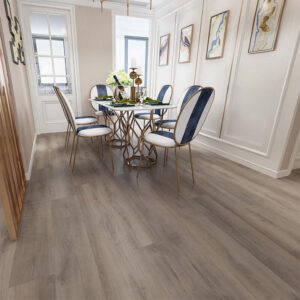When it comes to the purchase of hardwood flooring, you’re not the only one who has a lot of choices. There are different types of wood, cuts, colors, and species. The options are endless, and the choices you make will affect your home’s overall style. It’s also important to consider the cost of the material, as well as the resale value of the final product.

Prefinished vs. unfinished hardwood floors are two types of flooring that can be installed in your home. Each type has its own advantages and disadvantages. However, it’s important to make the right choice for your needs. You may want to talk to experts for more information about your options.
Prefinished hardwood flooring is a more durable alternative to unfinished floors. Since it’s finished before it’s shipped on-site, it’s less prone to water damage. It’s also easier to install and comes with a longer warranty. It’s more resistant to dents, scratches, and discoloration.
On the other hand, unfinished hardwood allows for a wide range of customizations. You can choose from many different species of wood and even paint it with unique effects. You can create a look that matches your personality and style.
When choosing between prefinished and unfinished floors, you should also consider how long you’ll need them. Prefinished floors can last for several years, but they may need to be refinished in the future. On the other hand, unfinished floors can be repaired and replaced individually.
Both types of flooring are great options for remodeling projects. Whether you’re restoring a classic floor or designing a new room, a professional can help you decide what’s best for your needs.
In addition, both types of flooring offer a variety of options when it comes to installation. Typically, you’ll need a power floor nailer or pneumatic stapler. You’ll also need a sander for an unfinished floor. This will help you get the evenness you need to ensure that your new flooring looks great.
Both kinds of flooring are popular choices for homeowners, so it’s important to weigh your options carefully. You’ll also need to consider your budget.
Wood flooring grade is an important factor to understand when buying hardwood. There are many types of grades available, each with its own characteristics. Choosing the right grade can help you achieve the look and feel that you’re looking for.
The National Hardwood Lumber Association (NHLA) sets industry standards for grading hardwood lumber. They have established eight individual grades for common domestic species, as well as exotic species.
In general, the higher the wood grade, the cleaner it looks. However, lower grades can be more expensive. These grades are often less dense and have more sapwood and holes. You’ll need to consider your financial situation and budget when determining your wood flooring grade.
The two most popular domestic species are White Ash and Beech. Both grades are durable and can be used for a wide range of purposes.
The #2 Common grade is a good choice for those seeking a rustic appearance. It’s also a good choice for general utility use. This grade has more boards that have natural wood marks, as well as large knots and bold streaks.
Another popular grade is Select. This grade has a smaller number of small knots and holes. The color can be a little bit different than the other grades. The wood is also slightly less uniform than the other grades.
Prime grade is the highest quality hardwood floor. It’s also the most expensive. It’s the best for general utility. It’s usually smooth and free of defects.
The next highest grade is Select. It’s only a slightly lower grade than the prime grade. It’s also the most uniform. The wood has a few imperfections, such as holes and cracks, and a few minor color variations.
Hardwood flooring is an excellent addition to any home, but it does have a price. Whether you’re installing it yourself or having it professionally installed, the cost will depend on your budget and the type of wood you choose.